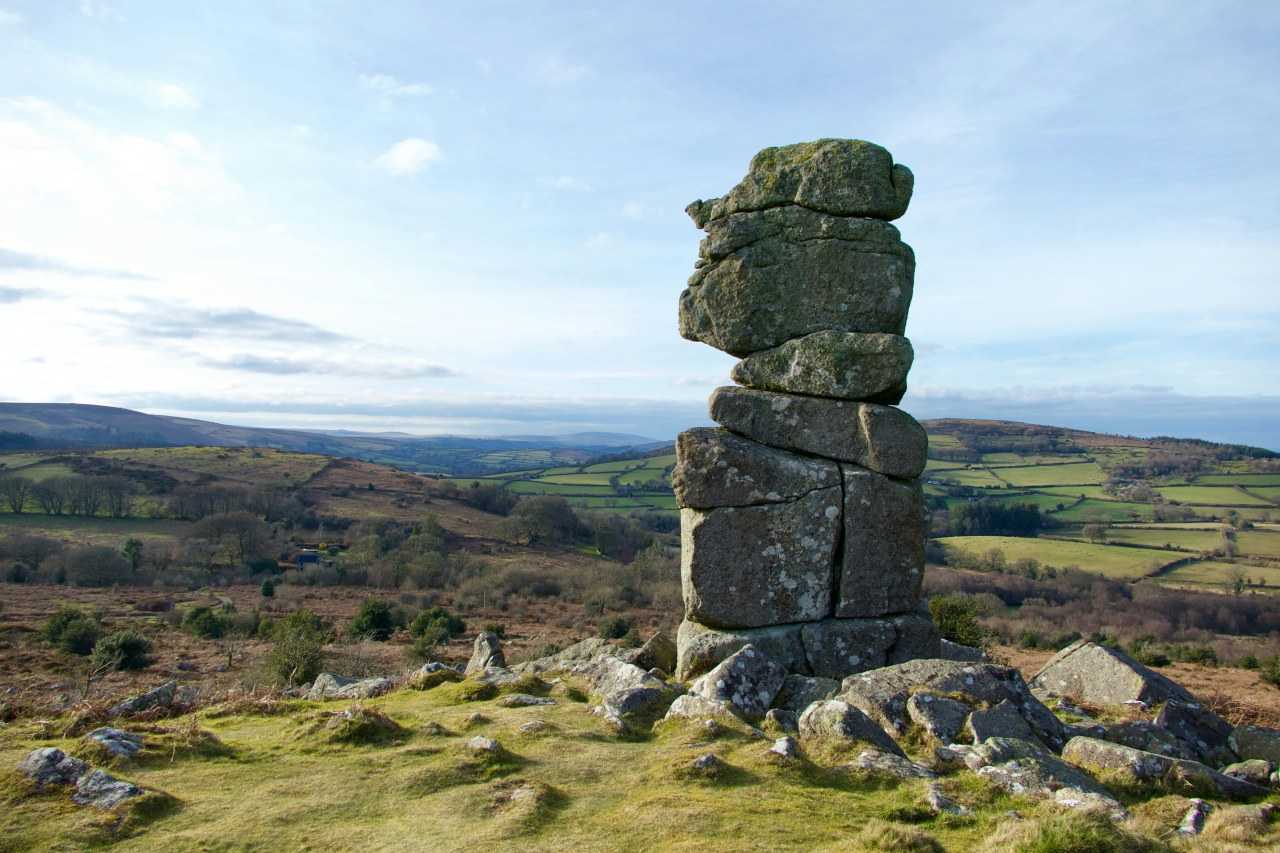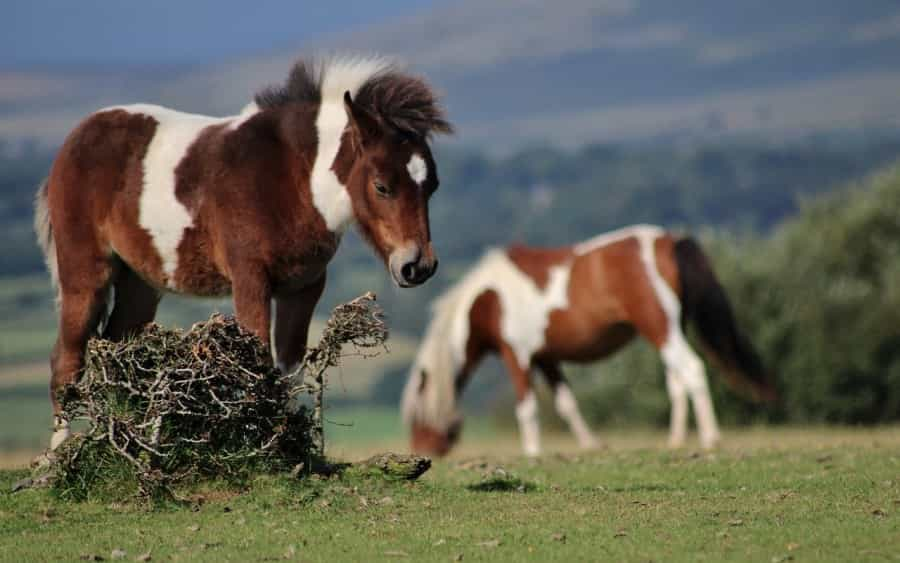Dartmoor Area Guide

Stretching over 368 square miles (954 km²) of protected land in southwest England, Dartmoor’s wild landscapes are instantly recognisable. The terrain here is mostly made up of ancient granite, which forms the iconic rocky tors, lakes and waterfalls that attract around 10 million visitors to the national park each year.
This is a living and working landscape: farming is still thriving in Dartmoor, with around 90% of the park's area used for some form of farming. However, much of this is rough grazing rather than intensive agriculture – and as a result, the environment is fairly unspoiled, sustaining a good biodiversity of wildlife from the famously hardy (but now endangered) wild ponies to the world’s largest land slug, the ash black slug.
Pitchup’s guide to Dartmoor National Park will give you an introduction to this atmospheric area, including advice on the best outdoor activities and ways to make the most of your visit.
Where is Dartmoor?
Along with Exmoor National Park, which is up on the north Devon/Somerset coast, Dartmoor is one of the two national parks in England's southwest. Dartmoor is the larger of the two and it’s located further south, wholly within the county of Devon.
Its wild and peaceful landscapes make Dartmoor feel quite remote, but in fact it's very close to city life, with Plymouth a few miles away to the south and Exeter similarly close on the northern side. With A roads running around the edges of the park, access is easy from either city, or from major local towns like Tavistock, Okehampton and Newton Abbot.
As with most UK national parks, a car is useful for getting to the more remote areas, but it's certainly possible to have a car-free trip to Dartmoor, following long-distance walking/bike trails like the Dartmoor Way or using public transport to access popular sites like Haytor Rocks, Burrator Reservoir and Lydford Gorge.
How many tors are on Dartmoor?
The granite rock formations known as tors give Dartmoor its distinctive landscape – there are more than 160 of them around the national park. What qualifies as a tor is a matter of some contention, so in fact that number includes only the major tors (most of which have names); it’s said by some that there are up to 500 in total.
‘Tor bagging’ – visiting as many of the rocky outcrops as possible – is becoming a popular Dartmoor activity with visitors who enjoy a challenge. For those with less time on their hands, a tour of the tallest tors is also a rewarding experience.
Dartmoor's five highest tors
-
High Willhays (621m)
-
Yes Tor (619m)
-
Great Links Tor (586m)
-
Kitty Tor (584m)
-
Fur Tor (572m)
(metres above sea level)
Can you wild camp on Dartmoor?
Dartmoor National Park is the only area of England where wild camping is officially permitted, thanks to the Dartmoor Commons Act of 1985. However, there are some rules that must be followed, the most basic of which is that wild camping rights only apply to ‘backpack campers' who carry all their own equipment, stay only a night or two and leave no trace of their stay. Those who want to pitch a larger tent, travel in a group or stay overnight in a campervan or motorhome will need to find a campsite.
The rules of wild camping on Dartmoor hit the headlines in early 2023, when a local landowner won a high court judgement against wild camping on his land. The ruling was later overturned, but the case is not yet finished – it's due to be heard in the Supreme Court in October 2024.
The best way to find somewhere to wild camp on Dartmoor is to use the official map set out by the national park – this takes into account live MOD firing areas and ground-nesting bird seasons as well as areas that are off limits to wild campers.
Things to do in Dartmoor

It’s all about the outdoor activity in Dartmoor – this craggy terrain lends itself well to open-air activities like hiking and climbing, and walks take in fabulous scenery of forests, rivers and waterfalls like Canonteign Falls. And the outdoor interest doesn't stop at sunset – the lack of light pollution means there are some excellent stargazing locations in Dartmoor.
Bringing the family? There are plenty of family-friendly attractions around Dartmoor including places like Pennywell Farm and Dartmoor Zoo. And whatever your age, the park hosts numerous special events every year – from food festivals and vineyard visits to craft workshops and arts events.
When to visit Dartmoor
Dartmoor is at its busiest in the summer months, when visitors flock to Devon to take advantage of the longer days and warmer weather.
However, the park is particularly lovely in the 'shoulder seasons’ either side of high summer, so if you'd like a more peaceful experience you might like to consider coming along then. Spring is a fabulous time to visit Dartmoor, with bluebells, daffodils and other wildflowers blooming and the waterfalls in full flow after winter rains. Autumn is also a great time, with the changing colours of the leaves giving the scenery a golden hue.
And how about winter in Dartmoor? It's perfectly possible to carry on that outdoor activity through the colder months – on a crisp, clear winter day you may well have the trails to yourselves, and you'll be able to warm up after a walk with a drink by the fire in one of the cosy local pubs.










